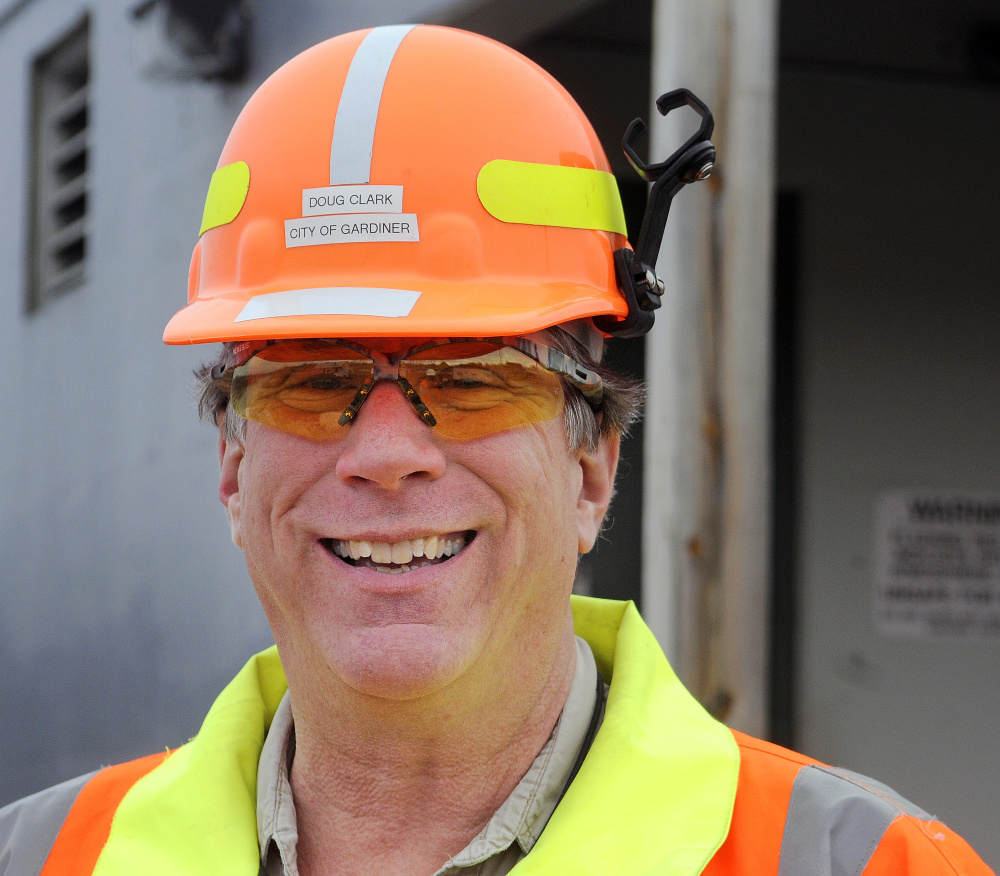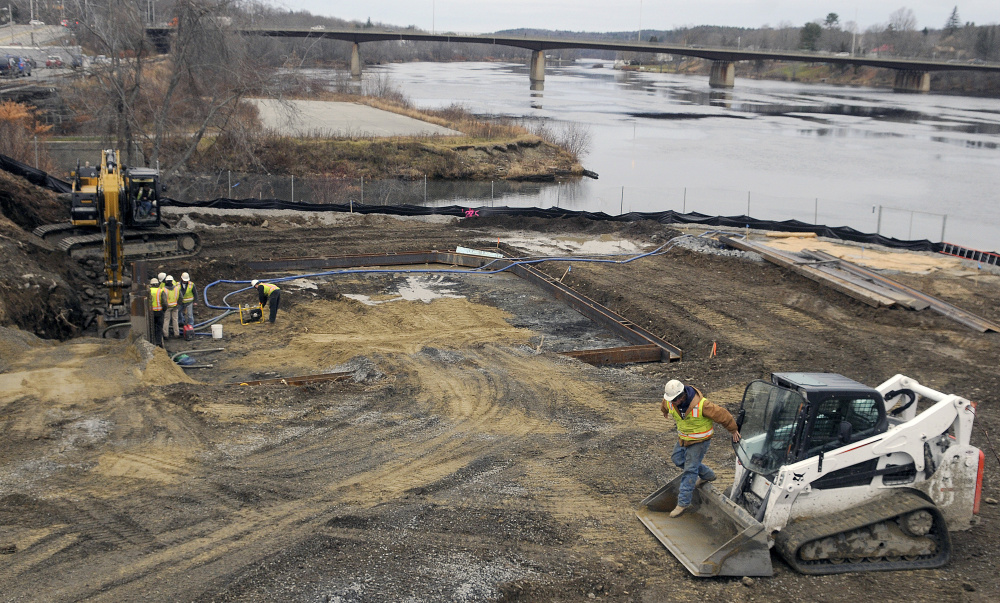GARDINER — Sargent Corp. workers hit a snag Wednesday as they were installing sheet piling just north of the boat launch on the Kennebec River, briefly halting the intermittent cycles of noise and vibration.
The work is the start of the sixth and final stage of Gardiner’s sewer rehabilitation and system upgrade. When the $3.8 million project is completed next fall, workers will have built an underground 400,000-gallon concrete storage and treatment structure on the site to capture and hold stormwater runoff so that it can be treated at the city’s wastewater treatment plant in South Gardiner.
The sheet piling, a series of interlocking metal strips, is being installed a strip at a time to stabilize the ground before excavation can start. It will come back out of the ground when it’s no longer needed after gaps around the completed concrete structure have been backfilled with dirt.
“They must have hit some rock or something,” said Doug Clark, wastewater director for the city of Gardiner. The first row of sheet piling is going in parallel to the railroad tracks and the workers might be encountering some buried construction debris, he said. Once that initial section is complete, the rest of the sheet piling should be fairly easy to install because the ground is marine clay 60 feet down.
The project takes Gardiner a long way from the origin of its sewer system that discharged both household sewage and storm runoff directly into the river.
“There has been sewer pipes in this city for 100 years,” Clark said.
With changes in the regulatory environment at both the state and federal levels, municipal officials have had to change how they address both sewage and runoff treatment.
“The most cost-effective way was getting the catch basins out,” said Richard Green, an engineer with Hoyle, Tanner and Associates.
Green is overseeing the project for the city.
“It was an early and cheap fix, but then you get to the point where you have to spend more money,” he said. “You have to have a compromise between catching the runoff and being affordable.”
Affordability is ever on Clark’s mind. Wastewater treatment in Gardiner — which also takes in wastewater from Randolph and Farmingdale — is funded by user fees. No taxpayer money supports it.
“We have a fairly high sewer bill here,” Clark said.
Generally speaking, an average residential quarterly sewer bill runs about $130.
“This is the best compromise and the biggest bang for the buck we could do,” he said. “We know people are struggling, and they are getting squeezed, and they don’t have the money to pay an enormous sewer bill.”
While earlier phases of the overall project were paid for with federal and state grants, this project is being funded through a U.S. Department of Agriculture Rural Development program. Clark said 40 percent of the project was funded by a grant and the remaining 60 percent by a low-interest loan.
The other option for paying for such projects is by issuing bonds, but Clark said that would have added a couple hundred thousand dollars in interest.
When this project is done and the debt service kicks in in about a year, residential rate payers can expect to spend about $50 more a year on their sewer bills. At the same time, he said, other debt service will be paid off, and that will drop bills a bit, but Clark said it’s too soon to know that amount.
Jessica Lowell — 621-5632
Twitter: @JLowellKJ
Send questions/comments to the editors.




Success. Please wait for the page to reload. If the page does not reload within 5 seconds, please refresh the page.
Enter your email and password to access comments.
Hi, to comment on stories you must . This profile is in addition to your subscription and website login.
Already have a commenting profile? .
Invalid username/password.
Please check your email to confirm and complete your registration.
Only subscribers are eligible to post comments. Please subscribe or login first for digital access. Here’s why.
Use the form below to reset your password. When you've submitted your account email, we will send an email with a reset code.